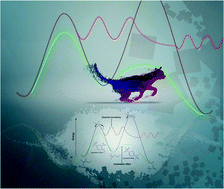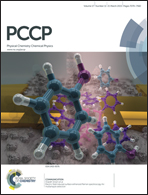An alternative interpretation of the ultracold methylhydroxycarbene rearrangement mechanism: cooperative effects
Abstract
Recent studies have reported surprising results related to the rearrangement of carbenes under ultracold conditions, making use of sophisticated models of quantum tunnelling to explain the observed phenomena. Here, we demonstrate that a methylhydroxycarbene (H3C–C–OH) rearrangement is possible by making changes in molecularity (i.e., through cooperative effects), owing to intermolecular hydrogen bond/H-transfer. The model used for accomplishing these changes in molecularity suggests the occurrence of two chemical species during the rearrangement and preferential formation of acetaldehyde. We propose an alternative interpretation for the methylhydroxycarbene rearrangement, as well as for a bimolecular isomerization mechanism for acetaldehyde formation with an activation barrier, Ea, of +0.25 kcal mol−1, relative to 1a′ (−8.06 kcal mol−1 relative to 1a); this barrier is lower than that required by H-tunnelling as proposed by Schreiner et al. We also note that the mechanism for obtaining vinyl alcohol leads to the simultaneous formation of acetaldehyde through an Ea of +13.53 kcal mol−1, relative to 1a (+0.93 kcal mol−1 relative to 1b), again confirming the predominant presence of acetaldehyde.


 Please wait while we load your content...
Please wait while we load your content...